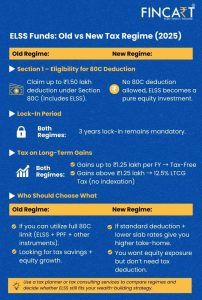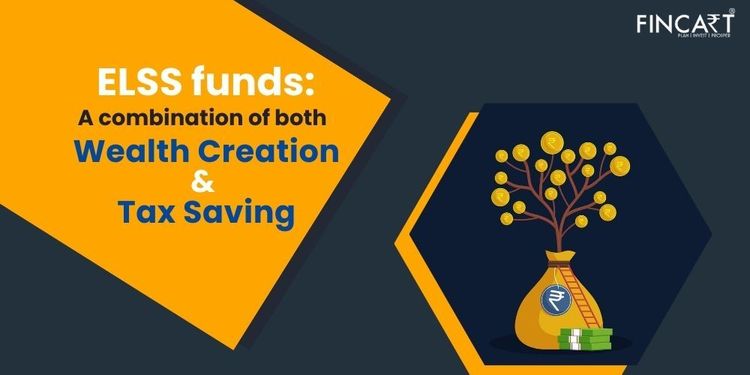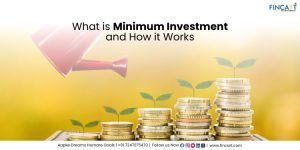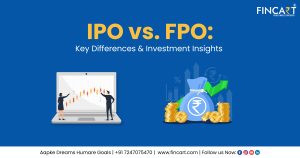Table of Contents
ToggleEquity-Linked Savings Schemes, or ELSS Funds, have long held a dual appeal for investors in India: they help build wealth through equity exposure and provide tax savings under Section 80C of the Income Tax Act. But with recent changes in the tax regime, their value proposition is evolving.
If you are considering ELSS now — whether you are planning tax savings, wealth accumulation, or both — you need to understand what has changed, what remains, and how best to use ELSS in your portfolio. This is where professional guidance, such as tax consulting services, can help you make smarter, more informed decisions and optimize your overall tax and investment strategy.
This article will take you through:
- What ELSS funds are, how they work.
- What has changed with the new tax regime.
- How taxation of long-term gains on ELSS works now.
- Advantages, disadvantages, and comparisons with other tax-saving and equity instruments.
- Practical tips: when ELSS make sense, and how to use them effectively.
What Are ELSS Funds?
ELSS (Equity-Linked Savings Scheme) mutual funds are funds that invest predominantly (at least 80%) of their assets in equity and equity-related instruments.
- Lock-in period: Once you invest, each unit can only be redeemed after 3 years.
- No maximum tenure: After the lock-in, you may continue to hold or top up the investment.
- Equity exposure: Being equity oriented, returns are volatile in the short term, but long term potential tends to be higher than many debt or fixed income tax-saving instruments.
What’s New: The Tax Regime and Its Implications for ELSS
Old vs New Tax Regime
Under the old tax regime, taxpayers could claim deductions under Section 80C (up to ₹1.50 lakh per financial year) for certain investments. ELSS was among the popular instruments for this deduction.
Under the new tax regime (which many taxpayers are opting for since FY 2023-24 / FY 2024-25), deductions under Section 80C and many other Chapter VI-A deductions are not available. ELSS thus no longer provides a tax deduction benefit for those who choose the new regime.
So, one of the primary pulls of ELSS (tax saving via 80C) is no longer applicable if you are under the new tax regime.
If you are unsure which regime works best for you, consulting a tax consulting services provider or a professional tax planner can help you calculate your liability under both regimes and make a smarter decision.
Long-Term Capital Gains (LTCG) Tax Rules — What Changed
Even if the tax deduction benefit is gone in the new regime, ELSS still involves investment in equities, so LTCG rules apply. Recent changes are:
- The threshold for tax-free long-term capital gains (from equity mutual funds, including ELSS) has been raised to ₹1.25 lakh per financial year. Gains up to this are exempt.
- Gains above that threshold are taxed at 12.5%, without the benefit of indexation.
- The lock-in of 3 years still applies to ELSS, but the LTCG benefit accrues only after that.
Are ELSS Funds Still Worth It?
Given the changes, the question many are asking: “Is ELSS still a good option?”
Here are the pros and cons in the current context:
Pros | Cons / Limitations |
Equity-linked growth potential: Over long horizons, ELSS has historically delivered strong returns compared to many fixed income/tax-saving alternatives. | No 80C deduction under new regime: If you’re on new regime, you lose that tax deduction benefit. |
Shortest lock-in among 80C-instruments: Just 3 years vs 5 or more for many other tax-saving instruments. | Risk / volatility: Equity exposure means short-term fluctuations. If redeemed just after lock-in, returns may be modest or negative. |
Tax-efficient LTCG beyond threshold: Gains up to ₹1.25 lakh are still exempt; above taxed at 12.5%. | Lock-in constraint: You cannot redeem before 3 years. Even after that, you may want to stay for longer to smooth volatility. |
Flexibility after lock-in: Once 3 years are up, you can stay invested, partially redeem, or reinvest as per your goals. | Not useful for those wanting immediate liquidity or minimal risk. |
Impact on Inflows & Behavior
Since the new tax regime became more widely adopted, inflows into ELSS have dropped. Many investors are opting out once the lock-in ends, because tax deduction benefit is gone.
For many, ELSS funds are now viewed more like “regular equity mutual funds with a 3-year lock-in” rather than as tax-saving vehicles.
When Should You Use ELSS? (As Part of Your Tax & Wealth Planning)
Here are scenarios where ELSS may still make sense, especially given the current tax situation:
- You are in the old regime and want to maximize 80C deductions.
- If the old regime still applies (or you choose it), investing in ELSS up to ₹1.50 lakh can reduce taxable income.
- Factor the deduction benefit when calculating your tax liability.
- If the old regime still applies (or you choose it), investing in ELSS up to ₹1.50 lakh can reduce taxable income.
- You have a long investment horizon & equity risk appetite.
- If you can stay invested for 5-10 years (or more), ELSS may outperform many alternatives.
- If you can stay invested for 5-10 years (or more), ELSS may outperform many alternatives.
- You seek a combination of moderate liquidity + equity exposure.
- After 3 years, you do get the flexibility to redeem or partially exit.
- After 3 years, you do get the flexibility to redeem or partially exit.
- You want diversification:
- ELSS funds invest across sectors and companies. As part of a balanced portfolio (equity + debt + other assets), they offer growth potential.
- ELSS funds invest across sectors and companies. As part of a balanced portfolio (equity + debt + other assets), they offer growth potential.
- If you are using tax planner / wealth management services, decide which regime (old/new) works better for you. The choice of regime itself may influence whether ELSS is useful.
For Whom Might ELSS Be Less Attractive?
If you are under the new tax regime strictly, and don’t expect the old regime to benefit you more, then ELSS is less attractive solely for tax savings.
If your risk profile is low, or you need liquidity in the short to medium term (<-5 years), the equity fluctuations plus lock-in may hamper your goals.
If there are better equity mutual fund options (e.g., low-cost index or flexicap funds) that do not have lock-in and offer similar growth potential, you might prefer those, especially in a portfolio where tax saving is not a major driver under the new regime.
Comparison: ELSS vs Other Tax-Saving / Equity Options
Option | Lock-in / Exit Constraint | Tax Benefit | Growth Potential | Suitable For |
ELSS (Old Regime) | 3 years lock-in | Deduction under 80C up to ₹1.50 lakh | High (equity exposure) | Those wanting both tax saving & equity returns |
ELSS (New Regime) | 3 years lock-in | No 80C deduction benefit | Growth potential remains, LTCG rules still apply | Equity seekers who accept lock-in and want tax-efficient gains beyond exemption threshold |
Flexicap / Index Funds | No lock-in (once invested) / redeem anytime | None (unless in old regime and via some other deduction) | Good (especially if fees low) | For wealth creation, for those valuing flexibility |
PPF / NSC / Tax FD / NPS | Longer lock-in / age-based rules | 80C deduction (old regime) & other benefits depending instrument | Modest, fixed or linked returns | Conservative investors, risk-averse, needing guaranteed returns |
Ulips / Insurance + Savings | Lock-in, charges etc. | Deductions sometimes, depending on product & regime | Lower net returns after fees | Those wanting combination of insurance + savings |
Practical Tax Details for ELSS in FY 2024-25 / AY 2025-26
To make sure you don’t get caught unaware, here are the concrete tax rules as of now:
- Section 80C Deduction: Up to ₹1.50 lakh per year, but only under the old regime. New regime does not allow this deduction.
- Lock-in period: 3 years. For each fresh SIP or lump sum, lock-in applies from the date of investment.
- LTCG (Long-Term Capital Gains):
- Exemption threshold: ₹1.25 lakh per financial year on gains from equity mutual funds / equity shares.
- Above that, gains taxed at 12.5% (without indexation).
- Exemption threshold: ₹1.25 lakh per financial year on gains from equity mutual funds / equity shares.
Short-Term Capital Gains (STCG): Gains on equity funds if redeemed before the holding period for LTCG are taxed at applicable STCG rate. (For equity mutual funds that’s typically 1 year holding for LTCG qualification) www.bajajfinserv.in+1
Choice of Tax Regime: Each taxpayer must review whether old or new regime gives better net tax benefit when combining income, deductions & expected investments. ELSS may tilt that balance in favour of old regime only if you can utilize 80C fully, or if other deductions make old regime attractive.
Conclusion: Where ELSS Stands Today
ELSS funds today are at a crossroads. The removal of deduction under Section 80C for those on the new tax regime has reduced one of their key advantages. Yet, ELSS still retain strong features:
- equity growth potential
- modest tax efficiency via LTCG rules
- shortest lock-in among tax-saving options (when deduction is relevant)
- portfolio diversification benefits
For those who are tax planners, wealth management advisors, or individuals seeking to build equity exposure, ELSS may still be part of an optimal mix. But they must be used with clear understanding of the regime, time horizon, risk tolerance, and alternative options.
Action Steps (What You Should Do Next)
If you are considering ELSS now:
- Check which tax regime you are under or likely to choose (old vs new). Calculate which gives you lower tax burden.
- Assess your investment horizon: can you stay invested beyond 3 years, ideally 5-10 years to earn real gains?
- Review your risk tolerance: equity volatility can be steep; lower time frames may hurt returns.
- Compare ELSS funds: expense ratios, fund performance (5- and 10-year), fund manager track record.
- Use ELSS in portfolio context: don’t overload just for tax savings; use as one piece of wealth management services strategy.
Consult a tax planner or financial advisor, especially if your income, deductions, and investments are complex.





